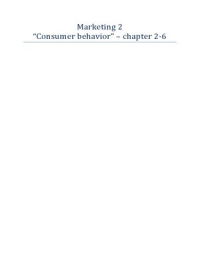Samenvatting
Summary Consumer behavior - hfd 2 t/m 6
- Vak
- Marketing II
- Instelling
- Tilburg University (UVT)
Samenvatting van de stof voor de eerste tussentoets van Marketing 2 (13-2-2015). Het is in het Engels samengevat, omdat de toets ook in het Engels gegeven wordt.
[Meer zien]



